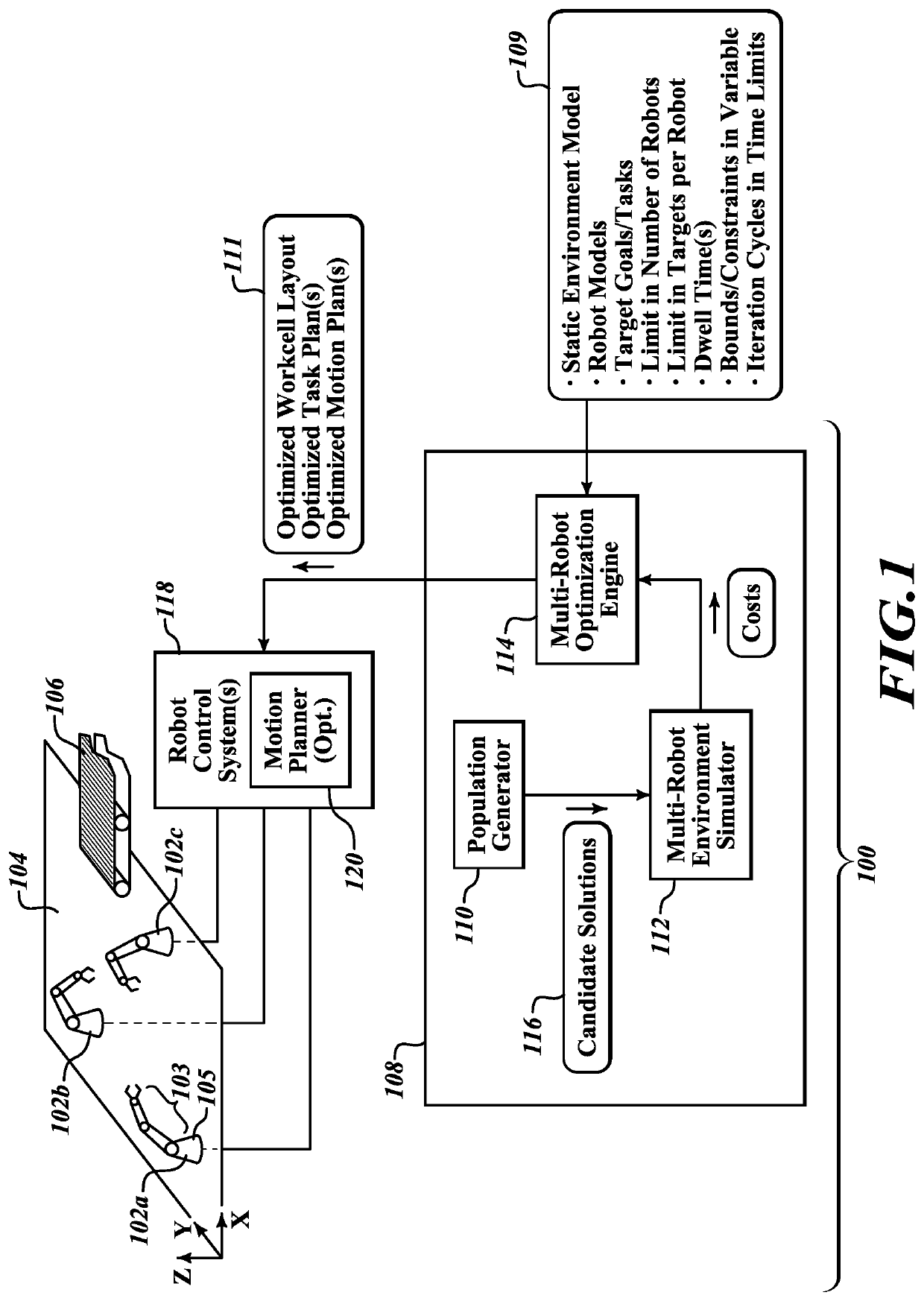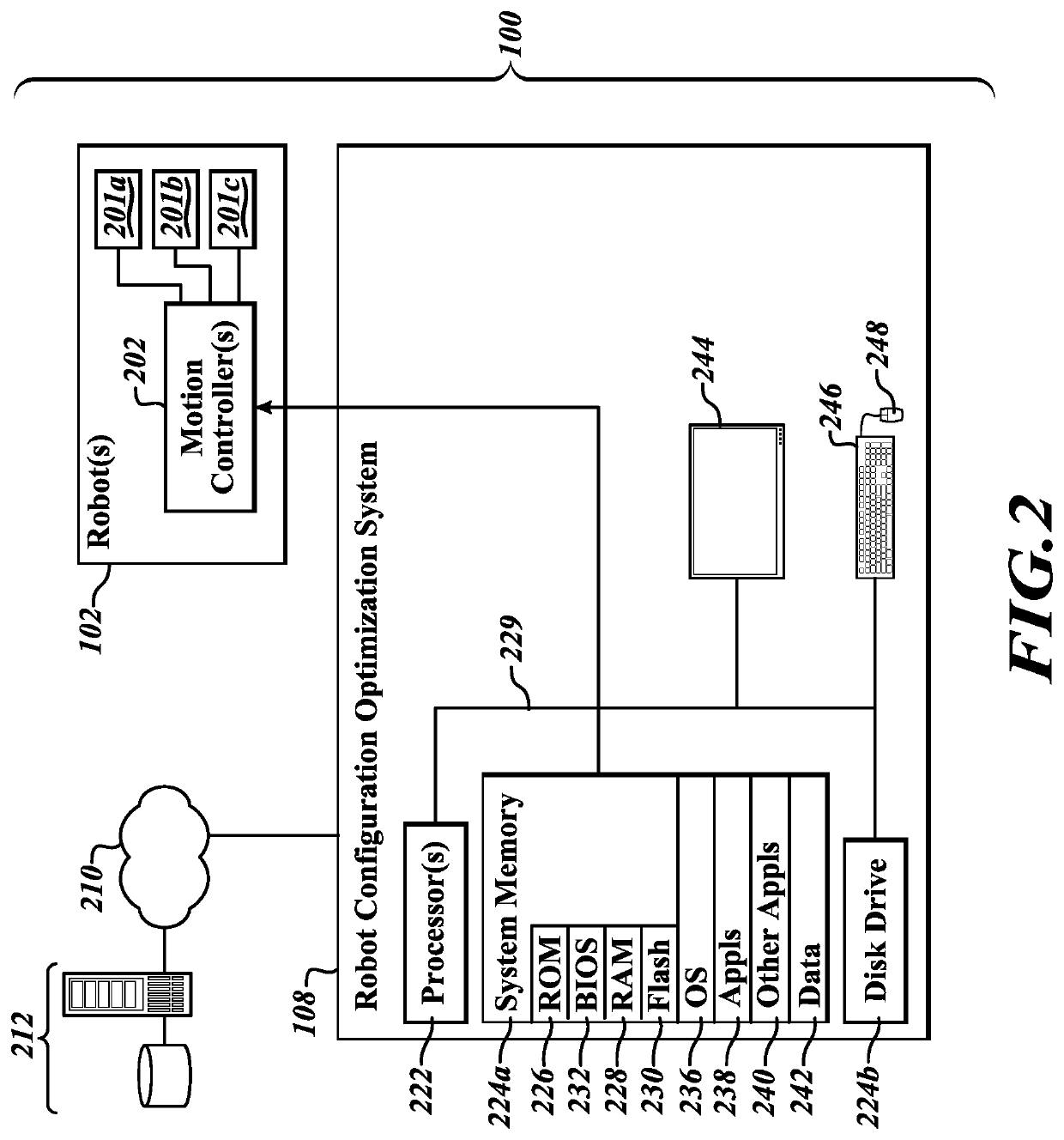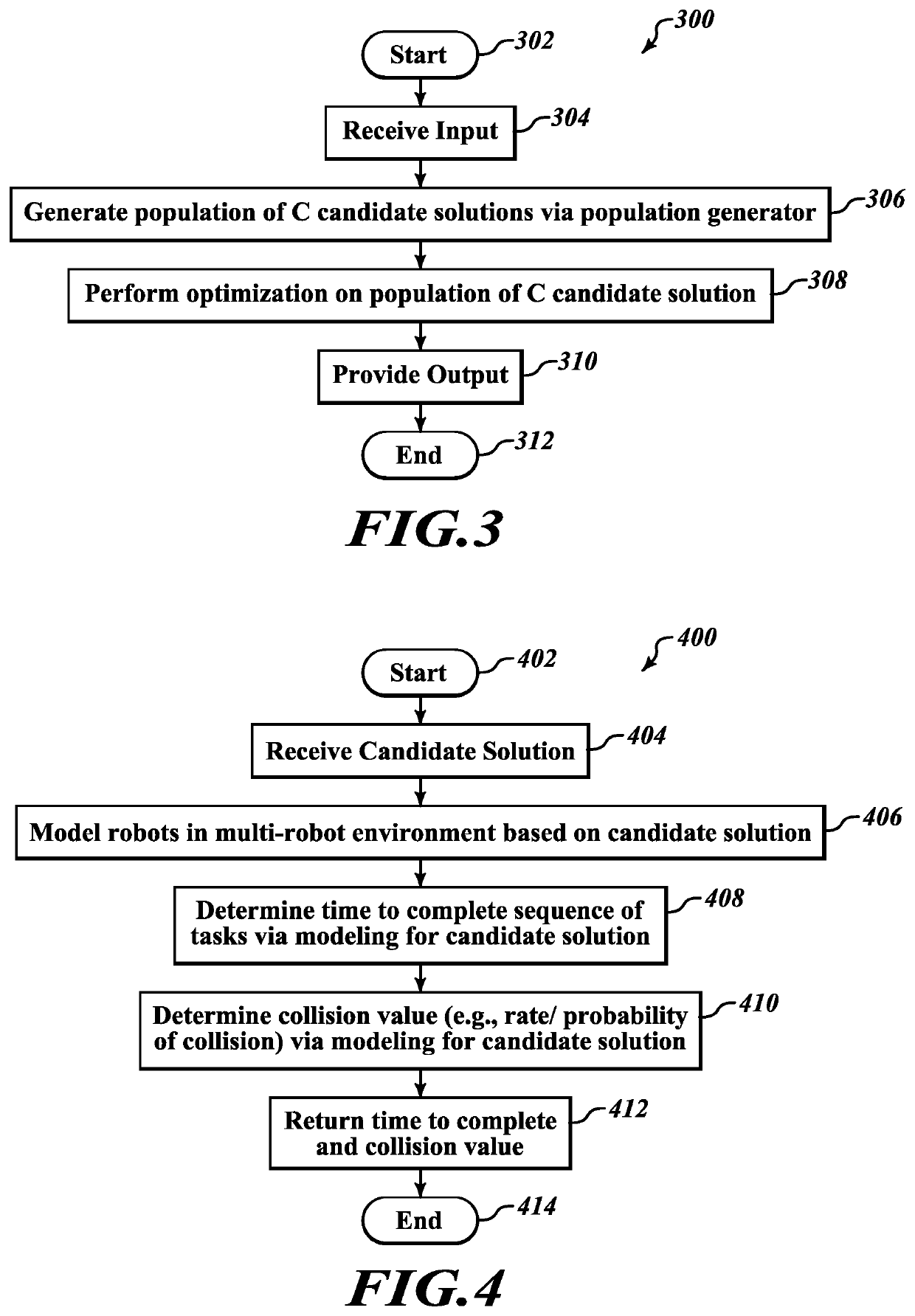Configuration of robots in multi-robot operational environment
a multi-robot, robot technology, applied in the field of robot configuration, can solve the problems of difficult and time-consuming implementation, not producing an optimized, and affecting the operation efficiency of the robot, so as to reduce the wait time of the robot, reduce the energy consumption or expenditure, and maximize the use of the floor space.
- Summary
- Abstract
- Description
- Claims
- Application Information
AI Technical Summary
Benefits of technology
Problems solved by technology
Method used
Image
Examples
example 1
[0135]A method of operation in a processor-based system to configure a plurality of robots for a multi-robot operational environment in which a plurality of robots will operate, the method comprising:
[0136]generating a population of C candidate solutions via a population generator, each of the candidate solutions in the population of C candidate solutions specifying for each of the robots: a respective base position and orientation, a respective set of at least one defined pose, and a respective task or target sequence, where the respective base position and orientation specify a respective position and orientation for a base of the respective robot in the multi-robot operational environment, the respective set of at least one defined pose specifies at least a respective home pose of the respective robot in the multi-robot operational environment, and the respective task or target sequence comprises a respective ordered list of targets for the respective robot to move through to com...
example 2
[0139]The method of example 1 wherein providing as output: the respective base position and orientation for each of the robots, a respective task allocation for each of the robots, and a respective motion plan for each of the robots includes providing an optimized task allocation that specifies, for each robot, a respective sequence of tasks to be performed in the form of an optimized ordered list of targets in C-space of the respective robot and one or more dwell time durations at one or more of the targets, and providing an optimized motion plan that specifies a set of collision-free paths, the set of collision-free paths specifying a respective collision-free path between each pair of consecutive targets in the ordered list of targets.
example 3
[0140]The method of any of examples 1 or 2, further comprising:
[0141]for each of the candidate solutions of the population C of candidate solutions, determining a respective time to complete the sequences of tasks and a respective collision value that represents a rate or a probability of a collision occurring in completing the sequences of tasks via modeling performed by a robot environment simulator.
PUM
 Login to View More
Login to View More Abstract
Description
Claims
Application Information
 Login to View More
Login to View More - R&D
- Intellectual Property
- Life Sciences
- Materials
- Tech Scout
- Unparalleled Data Quality
- Higher Quality Content
- 60% Fewer Hallucinations
Browse by: Latest US Patents, China's latest patents, Technical Efficacy Thesaurus, Application Domain, Technology Topic, Popular Technical Reports.
© 2025 PatSnap. All rights reserved.Legal|Privacy policy|Modern Slavery Act Transparency Statement|Sitemap|About US| Contact US: help@patsnap.com



